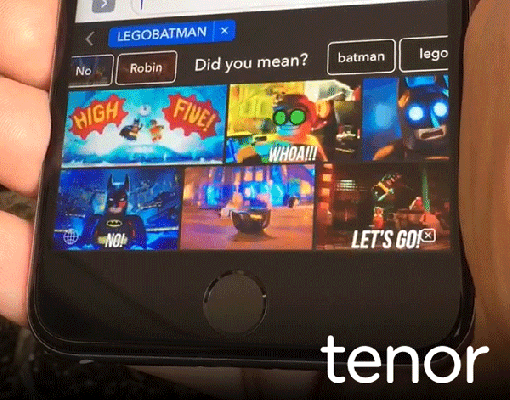Over the past several years, GIFs have emerged as a pervasive form of visual communication and self expression across multiple communication channels: They have found their way into our texts, our Tweets, our Messenger chats, and definitely into our Slack channels.
But like most new forms of media and communications, GIFs have thus far struggled to find a business model that matches their ubiquity. GIF-sharing startup Tenor hopes to change that, by partnering with media companies, brands and advertisers to help them build and distribute GIFs users will love — and hopefully make a few bucks along the way.
Tenor (neé Riffsy) makes a popular mobile keyboard that allows users to easily search for and share GIFs in whatever app they might be using at the moment. It also has an SDK to enable third-party developers to add GIF sharing into their own apps. So far that functionality has been adopted for use in apps and services that include Apple’s iMessage, Facebook Messenger, Facebook comments, WhatsApp and Twitter, among others.
Thanks to its own keyboard and integration with other apps, Tenor has more than 200 million monthly users and processes more than 200 million daily search requests for GIFs. With that scale, the company is looking to monetize an active audience of users searching for apps to best express whatever emotion they might be feeling at the moment.
But how do you do that? Well, if you’re Tenor you try to find media companies and brands that are thirsty for new ways to connect with consumers and who want to associate their goods and services with the emotions linked to the GIFs their customers are sharing with friends.
To aid in that pursuit, the company has hired media exec Jason Krebs as its chief business officer. Krebs was most recently head of sales for Disney’s Maker Studios and has spent the last couple of decades in digital media. All this time he’s been helping brands and advertisers understand the huge audiences they can get in front of with limited ad dollars, all thanks to new forms of media distribution.
After pitching every new type of ad unit under the sun, from digital display to online video to influencer marketing at places likeTremor Video, Conde Nast Interactive and NYTimes.com., Krebs is now tasked with getting marketers to understand GIFs.
But Krebs has some good things going for him. For one, there’s the scale thing we talked about up a few paragraphs above.
He’s also got Tenor’s ‘Insights Engine’ on his side. That tools lets anyone — not just marketers! — to get real-time data on how users are interacting with the company’s GIF search engine and what they’re sharing.
Theoretically that tool will allow brands to better understand what Tenor users care about at any given time. Using its data, brands will be able to pay Tenor to give priority to GIFs they make in the app’s search results. And hopefully, if those GIFs are compelling enough, consumers will share those branded messages with their friends.
It’s a pretty novel message to marketers. “No one takes a screenshot of a display ad and shares it with their friends,” Tenor CEO David McIntosh told me, in what is perhaps the understatement of the year. But with Tenor, people could be sharing ads just the same.
That said, there’s still a lot for Tenor and its advertisers to figure out. Will marketers be up to the task of learning a whole new way of communicating with a whole new medium of communication? (Yes. The answer is always yes.)
Are GIFs here to stay? Or are they just another passing fad like AOL or Snapchat, things teenagers thought were cool until their parents started using them? (Tough to say.)
How is Tenor planning to charge for access to its huge, highly engaged audience? Will it do so on a per-impression or a per-engagement basis? (TBD.)
And how will brands know that these sponsored GIFs worked? (Also TBD.)
Finally, what makes a good GIF? (It’s kind of like art or porn. You just know it when you see it.)
These are all questions Tenor will face as it tries to get brands on-board, Krebs acknowledges. But that guy could probably sell a ketchup popsicle to a woman wearing white gloves in the middle of July. If anyone can figure it out, he will.
